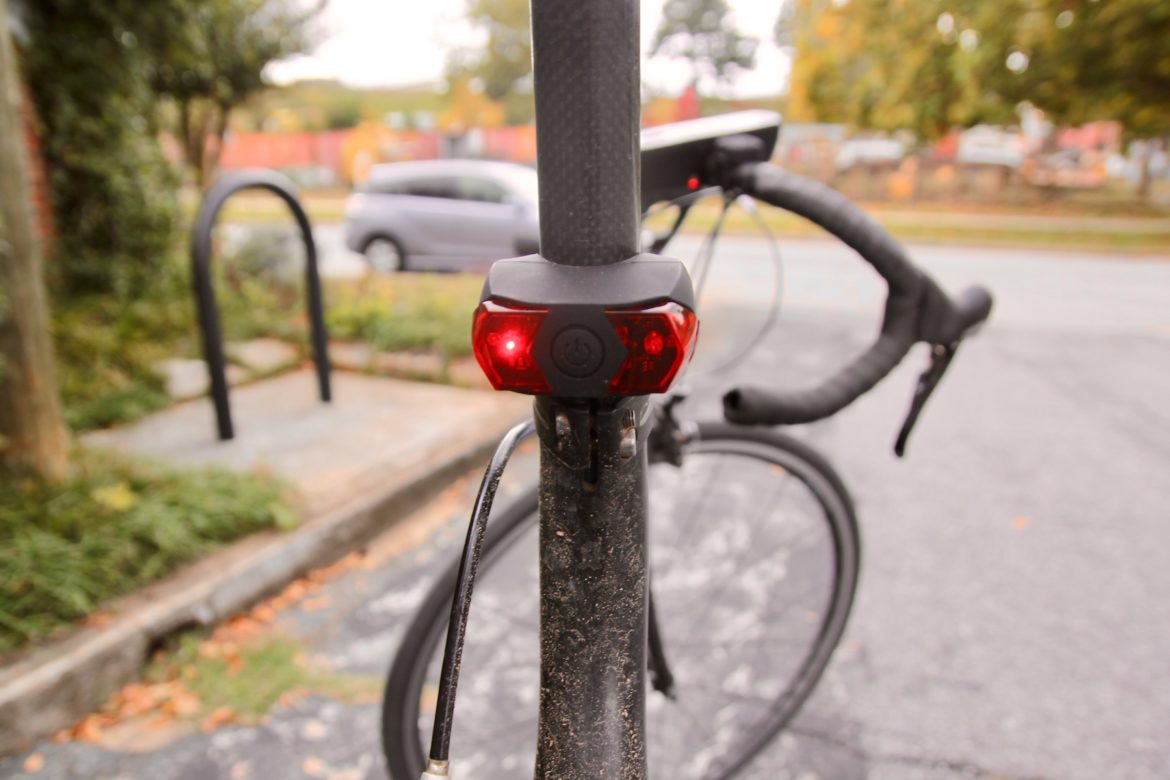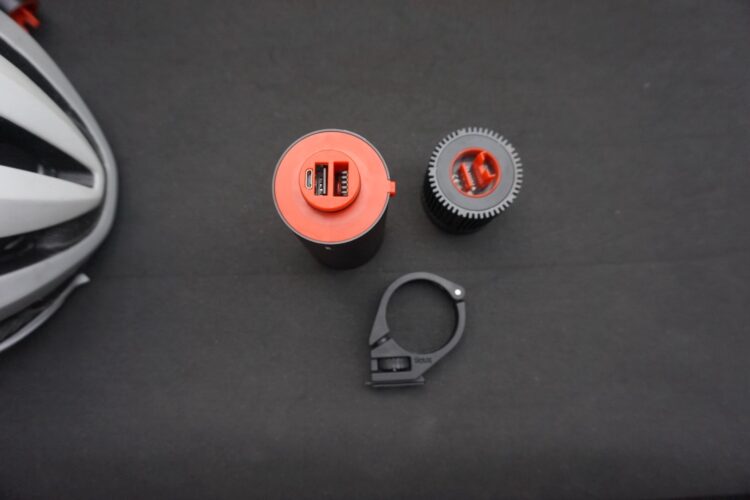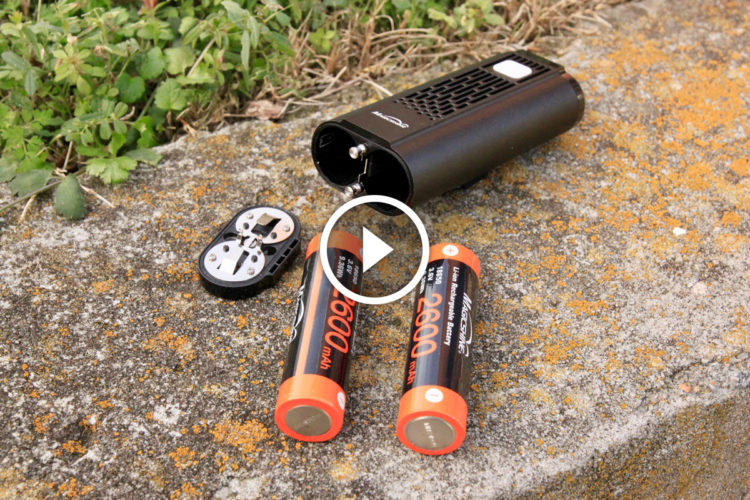
Sites like Kickstarter and Indiegogo are awash in bike gadgets and high tech items for sale. We usually get several requests a month from campaign organizers asking us to spread the word about their product, but end up ignoring most requests for various reasons. However, the Speednite recently caught our eye and seemed like it might be worth checking out.
Here’s the pitch: Speednite is a “smart” bike light that bundles various safety features and a digital display into a sleek package. It replaces the stem on any bike with a 28.6mm steerer and a handlebar with a 31.8mm clamping surface.
Since both of my mountain bikes are running 35mm bars, my only choice was to mount the Speednite to my road bike. The other measurement to keep in mind is the effective stem length — 90mm — which is probably too long for most modern mountain bikes. This actually ends up being a bit too short on my ride bike where I prefer a 110mm stem. I had trouble getting the Speednite to hold onto my bars without them slipping, despite torquing all three attachment bolts completely. A shim set is available to make for a tighter fit. Speednite also claims to have a solution for adjusting the effective stem length, though I did not try this.

In addition to the stem unit, there’s also a rear tail light that’s attached by a stretchy silicon band, and a remote control that attaches to the bars in a similar fashion. Finally, a sensor can be placed on the top of the helmet to get the most out of the system.

With the helmet sensor installed and activated, it’s possible to activate the Speednite turn signal by simply jerking your head to the left or right. A red laser beam is projected onto the street indicating the turn direction, and the rear blinky light acts as a turn signal too. On top of the unit the rider can see when the turn signal is active, and it turns itself off after about 5-10 seconds. Turn signals can also be controlled with the wireless handlebar remote.
Perhaps the one feature that got us the most excited about the Speednite is the headlight’s ability to track up and down based on the rider’s head position. As you can see in the image above, it’s a pretty cool effect. That is, until you realize this is exactly how a regular old, helmet-mounted light works. Actually, the helmet light even turns side-to-side so it’s actually more capable.
I have to admit though, it’s pretty magical to control the turn signals and light angle just by moving your head. The turn signal motion is a little awkward at first, but once you get the hang of it it’s much easier (and safer!) to use than the handlebar remote.

The light is said to pump out up to 800 lumens on high with up to 3.6 hours of battery life which is fairly impressive. The main Speednite unit is heavy–432g, about a pound–which could be due in part to the weight of its high-capacity battery.

Not only does the Speednite system include turn signals, there’s also a speed-activated brake light system which could definitely come in handy for preventing pileups during nighttime singletrack group rides. This feature requires pairing the Speednite with a smartphone or a Bluetooth speed sensor so the system can calculate deceleration. Unfortunately I did not have a chance to try this feature as the iOS app was not available at the time of testing.
I’ve been using the “hazard” mode during my daylight bike commute for added safety on the road. In this mode, the front light flashes and the laser lines show on both sides to (hopefully) indicate to drivers how much room they should give riders. In Georgia the law states that drivers must pass at least three feet to the side of cyclists, so it would be nice to see the laser lines projected about a foot farther out on each side.

Limited data from the smartphone app and other optional sensors can be displayed on the integrated, 1-inch square screen, which could allow some riders to ditch their dedicated cycling computer altogether. It displays in color and offers decent visibility, though it is a bit small.
When paired with the Speednite smartphone app, the helmet sensor also acts as a crash beacon in case of an accident. This is yet another safety feature that solo riders can appreciate.

All four of the Speednite components–the main unit, rear blinky, remote, and helmet sensor–feature a rechargeable battery with a USB port. A three prong USB charger cable is included which should simplify charging a bit. However, charging the main unit–essentially the bike’s stem–is tricky and for most will involve leaning the bike up against a desk so it can reach the USB port on a computer or power brick. An even longer USB cable could be a helpful add-on item.
The Speednite is set to launch on November 12, with super early bird pricing starting at $129. View the campaign on Indiegogo for more information.
Updated information from Speednite (11/21/19): The company says they hope to offer additional stem lengths in the future. The auto brake light feature is said to work without the use of the app and independent of the main stem unit, though I wasn’t able to verify this in my testing.
Note: Singletracks has not vetted this project and makes no guarantees about pricing, availability, returns, or final product quality. Singletracks is not affiliated with this project in any way and has not received any compensation for this review.














0 Comments